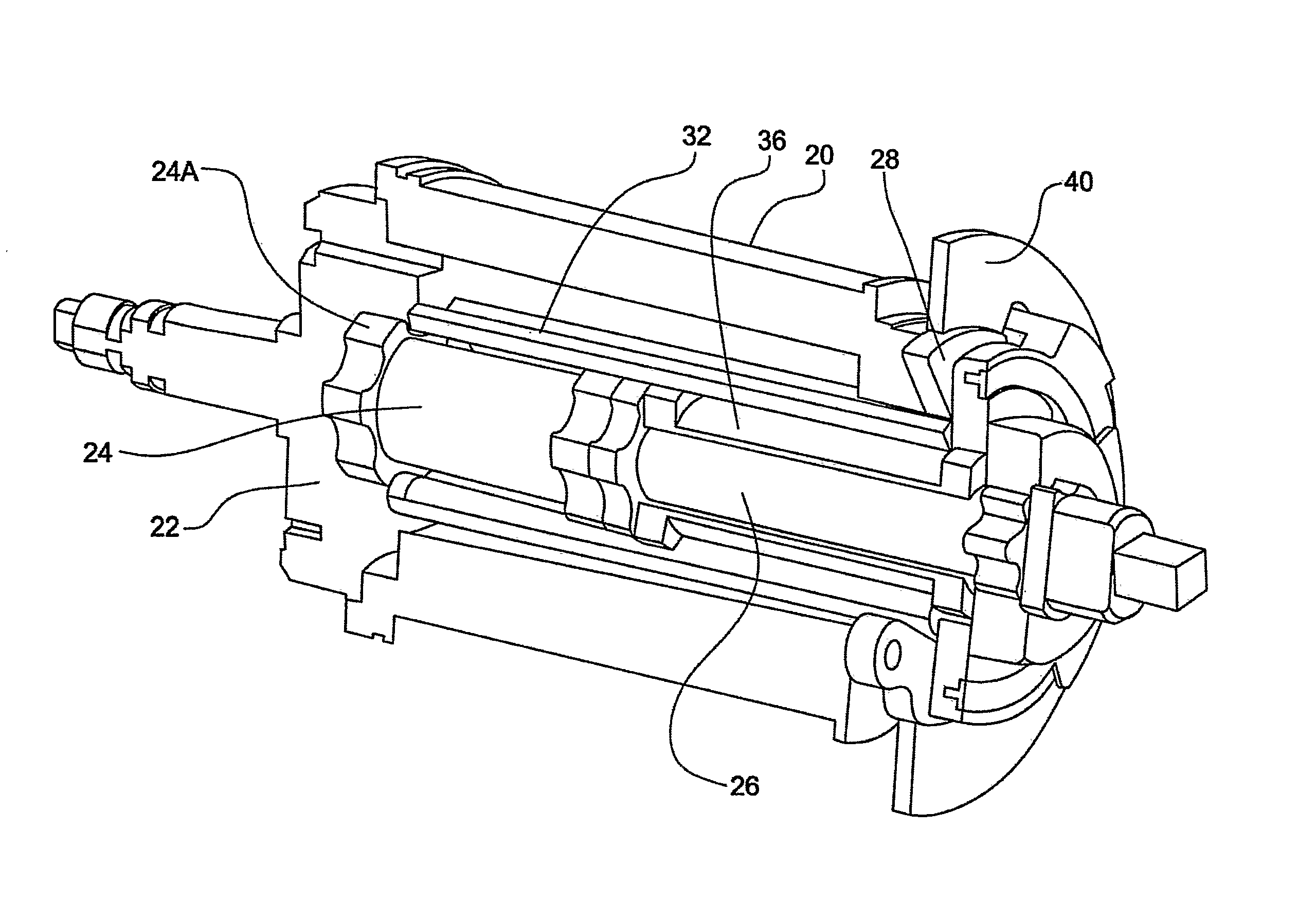Adaptive Load Limiting Seat Belt Retractor
a seat belt and load limit technology, which is applied in the direction of belt retractors, vehicle safety belts, vehicle components, etc., can solve the problems of limited payout, restraining force may actually dip below the predetermined level, and seat belt may impose very severe loads on the user
- Summary
- Abstract
- Description
- Claims
- Application Information
AI Technical Summary
Benefits of technology
Problems solved by technology
Method used
Image
Examples
Embodiment Construction
[0021]A vehicle safety belt arrangement incorporating a load limiter as described below is intended to operate as follows in a crash situation in which the vehicle concerned encounters a frontal impact with another vehicle or with some other object. Where the impact occurs at high speed, such that an absolutely fixed seat belt would place excessively high loads on an occupant wearing the seat belt, the load limiter initially allows limited rotation of the seat belt retractor spool in response to a seat belt tension in excess of a predetermined high value, for a limited period. However, after such period, after the occupant has experienced some deceleration and when the associated vehicle airbag has begun to play its part in reducing the momentum of the occupant, the limiting tension in the seat belt should be reduced to a lower level.
[0022]Referring to FIG. 1, in a two-stage load limiter mechanism for a seat belt retractor, from the beginning of the vehicle impact, indicated at orig...
PUM
 Login to View More
Login to View More Abstract
Description
Claims
Application Information
 Login to View More
Login to View More - R&D
- Intellectual Property
- Life Sciences
- Materials
- Tech Scout
- Unparalleled Data Quality
- Higher Quality Content
- 60% Fewer Hallucinations
Browse by: Latest US Patents, China's latest patents, Technical Efficacy Thesaurus, Application Domain, Technology Topic, Popular Technical Reports.
© 2025 PatSnap. All rights reserved.Legal|Privacy policy|Modern Slavery Act Transparency Statement|Sitemap|About US| Contact US: help@patsnap.com



